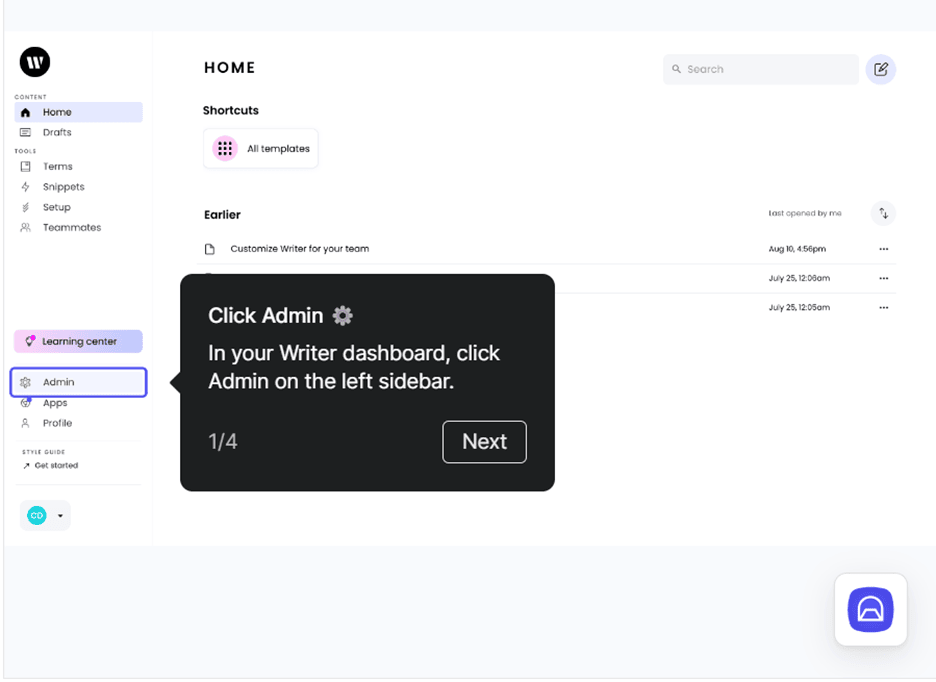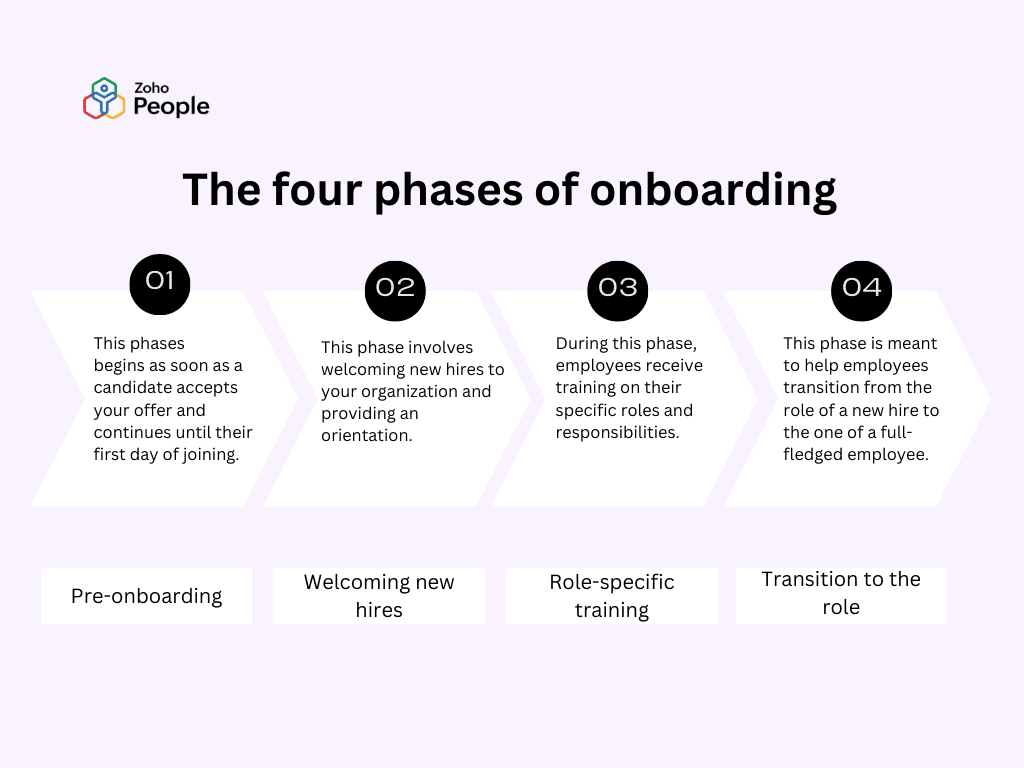Interactive Guides: Transforming Onboarding for Modern Enterprises
Are you still onboarding employees with the age-old approach? If so, you need to have a more efficient and faster way to onboard new employees.
Why?
Each interaction, whether major or minor, impacts how employees perceive your company. Therefore, it is imperative to offer a smooth hiring experience to your employees throughout their association with your company. With the help of digital onboarding solutions, companies can deliver positive onboarding experiences to get started.
According to Forbes, organizations with structured onboarding retain 58% of their employees for 3 years. Another important statistic reveals that effective onboarding increases employee productivity and retention by 60% and 52%, respectively.
In this blog, we’ll discuss how organizations can use interactive learning tools to onboard and increase employee engagement. Let’s get started!
Chapters
Traditional Onboarding Challenges

Some of the common challenges that traditional onboarding processes include:
Lots of paperwork: From offer letters to resources, employee onboarding involves too much paperwork. Employees often feel overwhelmed with an array of documents, videos, and to-dos, especially when they are familiarizing themselves with the organization and their primary job roles.
Uncertainty about job responsibilities: Role ambiguity may leave employees lost and unsure about their responsibilities. Lack of adequate guidance results in bad onboarding, which leads to frustration. It is vital to thoroughly document job roles and expectations and communicate them to the new hires.
Excessive information: A wealth of information creates a poverty of attention. – Herbert A. Simon
Too much information flow may become a major issue during onboarding. Such a muddling onboarding experience can bewilder employees to do or process anything.
Quick Tip: Consider sending out important documents during preboarding. On the first day, you can begin with orientation and introductions to increase employee engagement.
Understanding Interactive Guides
Interactive guides are a modern approach to employee induction and training. They include digital resources that offer step-by-step learning, real-time guidance, and learning-by-doing in workflows. By enjoying a synchronous learning experience, employees get acquainted with the organization and better understand its processes.
These interactive learning tools ensure a flawless onboarding experience by eliminating the need for conventional onboarding methods.

Transforming Onboarding with Interactive Guides
Interactive guides bring a lot of value and transform the mundane onboarding experience into an exciting one. Employees no longer need to juggle between cumbersome manuals and handbooks. With the help of interactive guides, they can access desired information when they need it through small bits. Let’s dive into the benefits of digital onboarding solutions:
Seamless learning experience: Interactive learning tools offer a seamless learning experience. Employees can follow the step-by-step guides and access relevant information according to their requirements without interrupting their workflow. This intuitive approach helps employees retain what they have learned, improving their productivity.
Goal-oriented: Training programs that include interactive guides focus on goal-oriented outcomes. They equip employees to acquire skills and knowledge to complete tasks efficiently, overcome challenges, and fulfil their assigned roles.
Low-cost: Interactive guides can be easily updated to adapt to the organization’s evolving requirements, making them much cheaper than traditional training approaches.
Few support requests: During onboarding and beyond, organizations want to avoid confused and unproductive employees. Also, bothering the support teams with unnecessary requests isn’t ideal either. Interactive guides prove helpful in such situations with onscreen virtual assistants that offer contextual help preventing delays.
Simplifies complex concepts: When prioritizing onboarding, it is important to simplify learning. Interactive guides work as microlearning tools, breaking down complex topics into small chunks with easily digestible information.
If you want your employees to complete specific onboarding processes, interactive guides make it easy for them to accomplish them through automated checklists of steps

Best Tips to Create Interactive Guides
Creating interactive guides is simple; however, it needs to be done thoughtfully. Let’s have a quick view of some of the top tips to create interactive guides to speed up learning for your employees.
Keep it straightforward: With a shrinking human attention span, your interactive guides should be short and succinct, covering all the necessary details.
Personalized learning: Since all the employees have different roles and responsibilities, the digital onboarding solutions must personalize content according to their needs. Also, use micro-learning modules to deliver information and ensure better understanding and absorption. This customization increases employee engagement and comprehension, fostering an efficient onboarding experience.
Focus on your audience: Customize your interactive guides for your employees. Include all essential steps that are relevant for new employees. For example, incorporating visuals captured by an event photographer can enhance the appeal and effectiveness of your training materials. However, at the same time don’t offer superfluous explanations. Ensure the content remains engaging and helpful.
Motivate employees: Always send timely reminders to your employees to share their performance. Send motivating internal newsletters, emails or messages to celebrate their achievements, fostering a productive workforce.
Implementation Strategies
Some of the top implementation strategies that you must consider include:
Understand the user behavior: Your employees need to know it all (relevant to their job roles and responsibilities). However, it is important to tap into user behavior before creating documentation for interactive guides. Here’s help:
Identify the areas that need to be explained explicitly. Cover all the essential details and guidelines. Sometimes, what seems simple might pose a challenge for others. Therefore, pay close attention and create content that answers specific search queries of users. Summing up, ensure interactive guides provide value more than mere information by addressing the needs and challenges of employees.
Integration with Support Channels: Integrating interactive guides to support channels such as email or live chat can significantly enhance user experience. Use tools that offer easy embed functionality and add links to guides to social media platforms and emails. Ensure links are easy to follow and take users to the right resources. Also, optimizing these guides for mobile is mandatory since many users may access them through their mobile phones.
Get feedback: Seeking employee feedback helps you to gauge the effectiveness of interactive guides. Including feedback buttons such as star ratings or feedback forms allows the users to share their thoughts. You can take this feedback constructively and refine the content accordingly.
Surveys also prove helpful in evaluating clarity and identifying areas for improvement. If employees don’t share feedback, carry out regular audits (every three months or twice a year) to review and update interactive guides so that they serve their purpose.
Easy Navigation: When employees get confused, they turn to guides for help. If they cannot find the resources they need, they get frustrated.
Streamlining navigation is important. It ensures the users can access guides promptly when needed. In addition, a well-organized repository of interactive guides motivates users to delve into different topics for proactive learning.
Conclusion:
Don’t let your employees scroll through piles of documents aimlessly. Rather offer them interactive guides that will help them understand better with improved speed and clarity. Make sure your employees have a smooth onboarding with the necessary contextual guidance.
 Author Bio: Irov is a content marketing specialist, demand generation enthusiast, and team player who is currently working with 2xSaS. He helps B2B SaaS companies spread the word about their products through engaging content. When he is not working he likes playing video games on his PS4.
Author Bio: Irov is a content marketing specialist, demand generation enthusiast, and team player who is currently working with 2xSaS. He helps B2B SaaS companies spread the word about their products through engaging content. When he is not working he likes playing video games on his PS4.
Improve your Marketing with the Power of AI
See how you can start with AI Marketing and reach your goals faster than ever before. Check out the Tips, Strategies, AI Tools, Masterclass, Courses, and Community. Unleash the true potential of your brand with the help of AI.